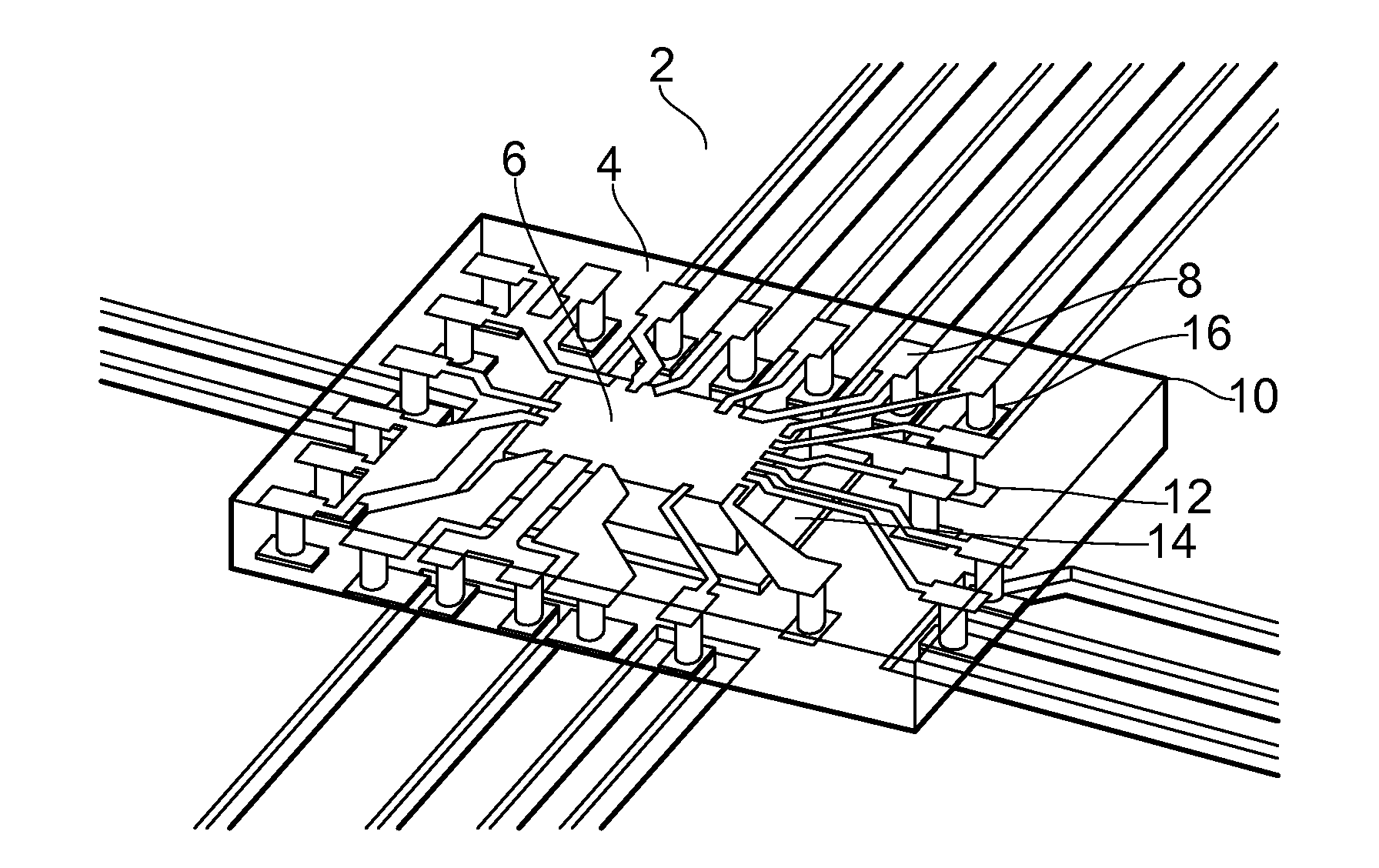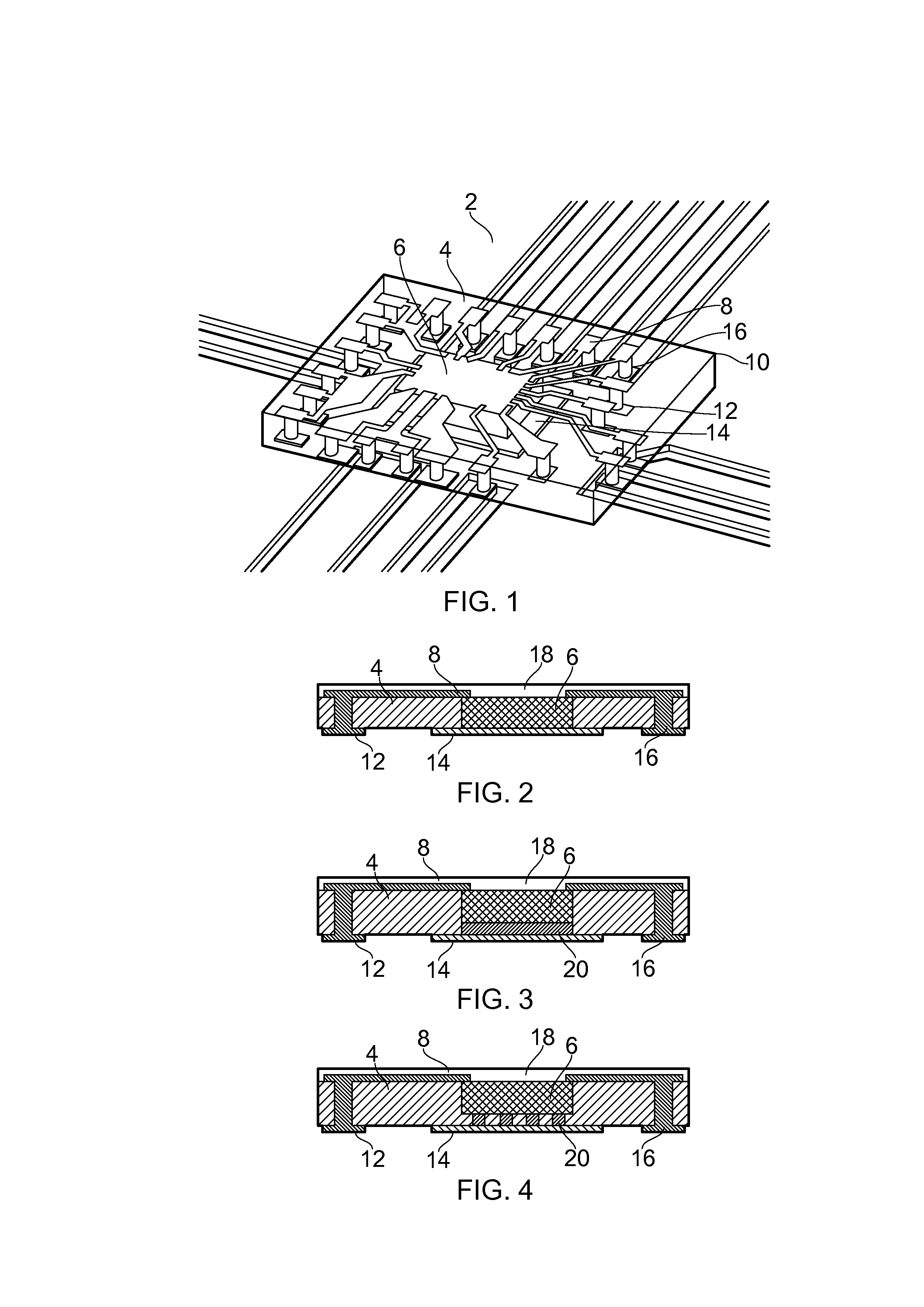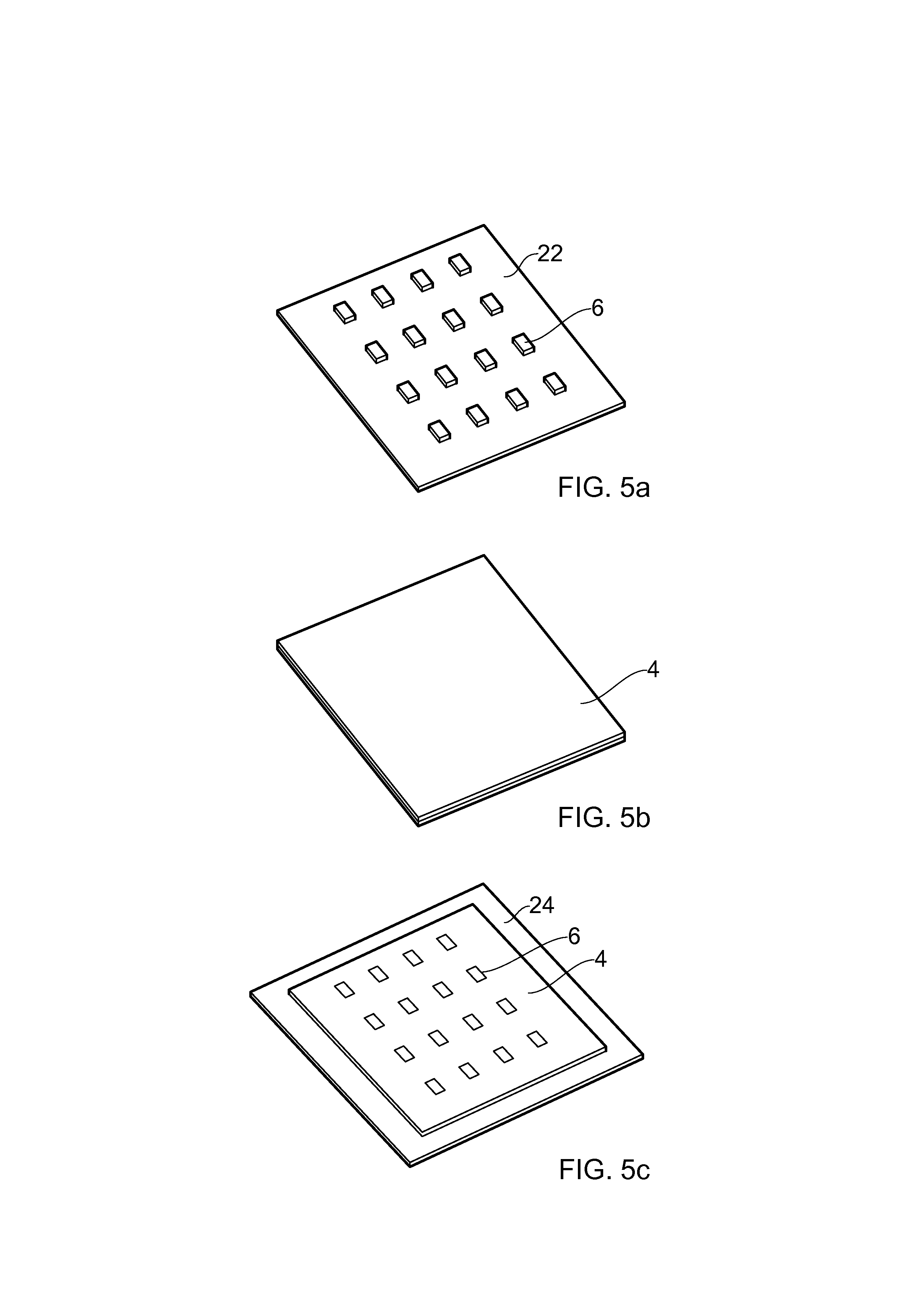Semiconductor package with improved thermal properties
- Summary
- Abstract
- Description
- Claims
- Application Information
AI Technical Summary
Benefits of technology
Problems solved by technology
Method used
Image
Examples
Embodiment Construction
[0038]Embodiments of the present invention are described in the following with reference to the accompanying drawings.
[0039]FIG. 1 shows an example of a semiconductor package 10 according to an embodiment of the invention. As shown in FIG. 1, the semiconductor package 10 includes a semiconductor substrate 6, with in this example the active side facing upward. As is well known in the art, active side of a semiconductor substrate is typically the side of the substrate that includes components such as transistors, capacitors and other circuitry. The semiconductor substrate 6 is embedded in an encapsulant 4, which is electrically insulating and which can provide mechanical support and protection for the semiconductor substrate 6. Electrically conductive interconnects are connected to the semiconductor substrate 6 at the upper side of the semiconductor package 10. These interconnects are laterally spread out and fed through the encapsulant 4 to a pad ring 12 located at a lower side of th...
PUM
 Login to View More
Login to View More Abstract
Description
Claims
Application Information
 Login to View More
Login to View More - R&D
- Intellectual Property
- Life Sciences
- Materials
- Tech Scout
- Unparalleled Data Quality
- Higher Quality Content
- 60% Fewer Hallucinations
Browse by: Latest US Patents, China's latest patents, Technical Efficacy Thesaurus, Application Domain, Technology Topic, Popular Technical Reports.
© 2025 PatSnap. All rights reserved.Legal|Privacy policy|Modern Slavery Act Transparency Statement|Sitemap|About US| Contact US: help@patsnap.com



